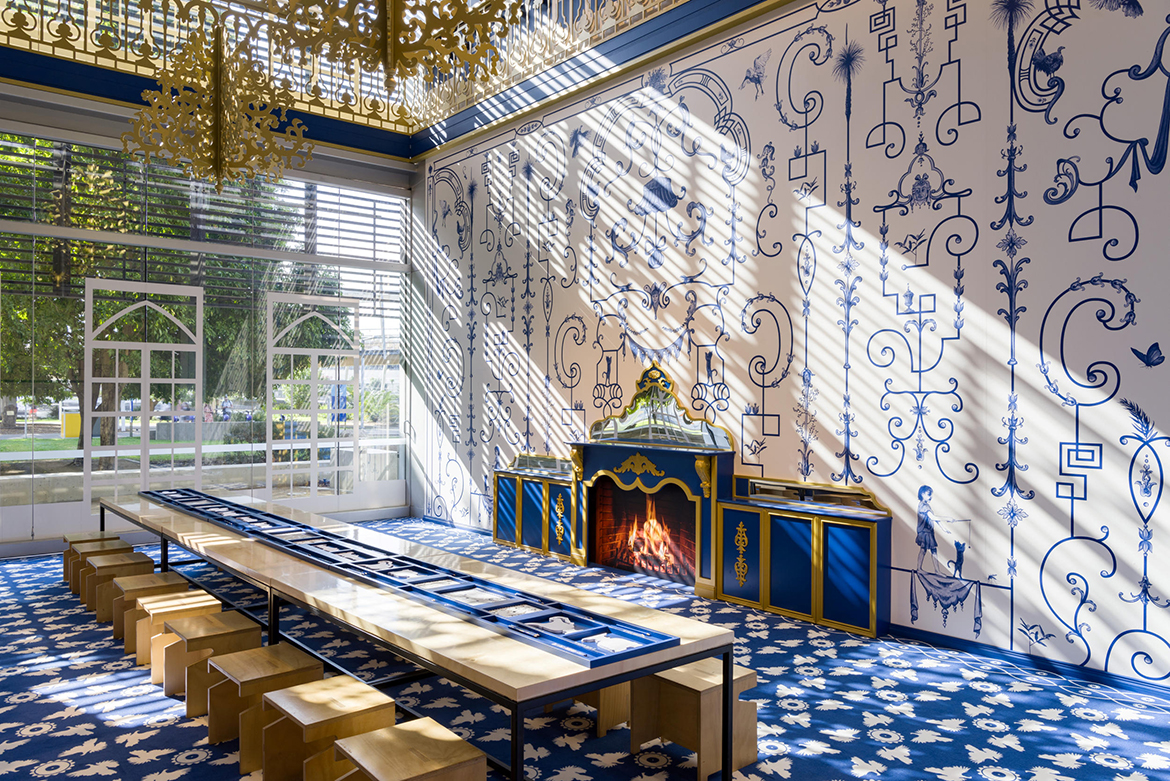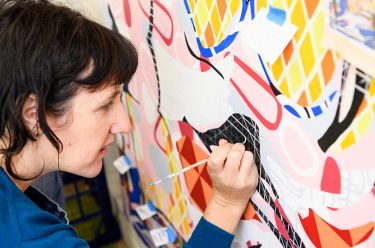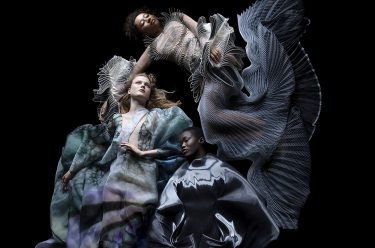In a fantastical new Children’s Art Centre project at the Gallery of Modern Art (GOMA) until 14 July 2024, Australian artist Natalya Hughes brings to life her vision for a castle interior that has its roots in both Turin, Italy, and the Brisbane suburb of Tarragindi. The artist explains the project where children can let their imaginations run wild as they explore the surprising delights of grotesque design.
Watch | Go behind-the-scenes with Natalya Hughes
At the Children’s Art Centre, Gallery of Modern Art (GOMA) from 9 September 2023 – 14 July 2024
Laura Mudge (LM) / ‘The Castle of Tarragindi’ brings together disparate elements. Can you please talk about the different sources of inspiration for the project?
Natalya Hughes (NH) / ‘The Castle of Tarragindi’ is a coming together of my longstanding interest in the grotesque and the curiosities and aesthetic inclinations of my daughter. The project expands on previous bodies of work that explore decorative languages and sometimes decor. After speaking with my daughter, Violet, about what might be interesting to stage in the Children’s Art Centre, I started thinking about and looking at the decor of castles. I’d recently seen an image of a castle interior designed by Jean Bérain and have long been interested in his version of the ornamental tradition of grotesquerie, so that castle and its decor seemed like an appropriate point of departure.
LM / Your daughter has been collaborating with you on the project. How has this influenced your approach to developing ‘The Castle of Tarragindi’?
NH / We felt the project was creatively born in our home suburb of Tarragindi — the central designs incorporate flora and fauna from nearby Toohey Forest and our own garden spaces, as well as images of everyone in our little family — so, the nomenclature honours that. It is also a kind of offering to Violet and her friends: Violet likes the odd, the quirky, the unexpected, and sometimes, the slightly monstrous. She’s very invested in details, which we have in common. So the project is informed by these things as well as by my own interests.
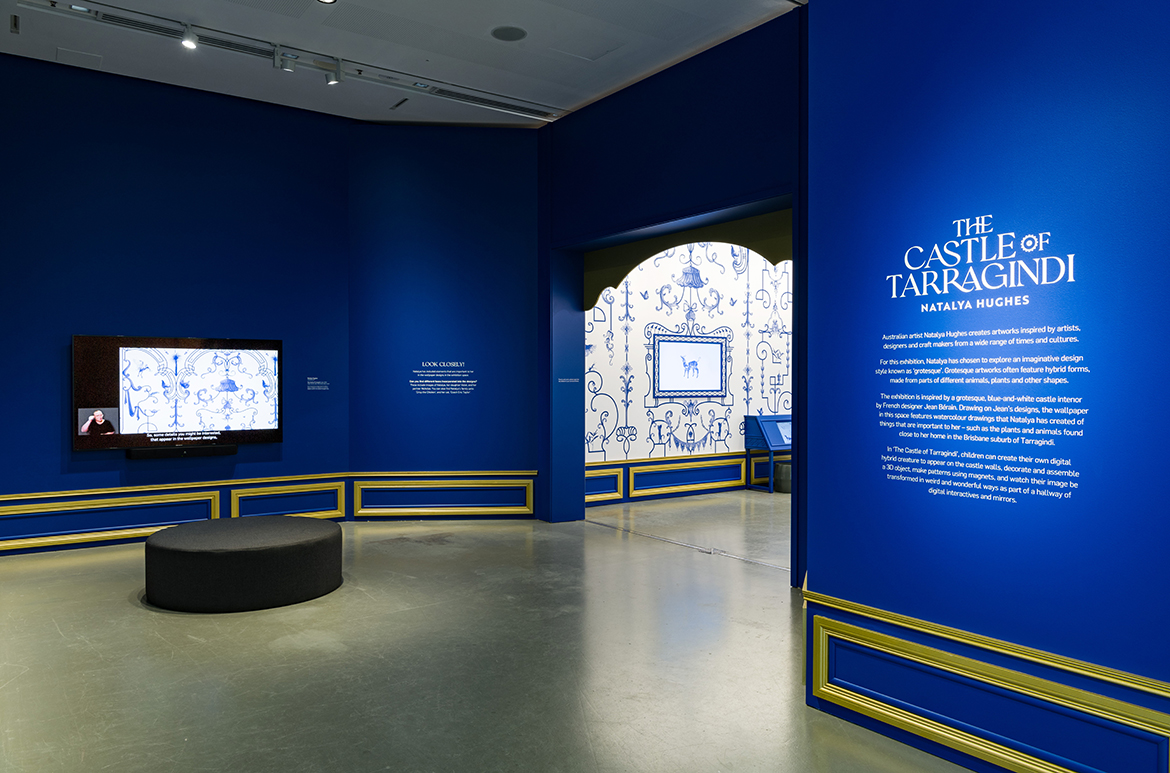
LM / Your practice explores decorative and ornamental traditions and often their associations with the body. What was of particular interest for you in exploring the grotesque?
NH / I’ve long been interested in the grotesque. I even wrote a chapter about it in my doctorate (2009). My interest in the grotesque is, broadly, its combination or co-presence of contradictory modes. While we commonly use the word ‘grotesque’ today to denote an experience akin to horror, its origins are in ornament: historically, the term is used to describe images, objects or visual traditions that combine something of aesthetic pleasure and something more challenging or unexpected, often comedic. In ornament or elsewhere, an example of the grotesque might combine curlicues, scrolls or florals with hybrid creatures: part animal, part object, part plant. If the creatures are monstrous, they are still palatable because they sit within the more aesthetically pleasing elements, and that’s very interesting to me.
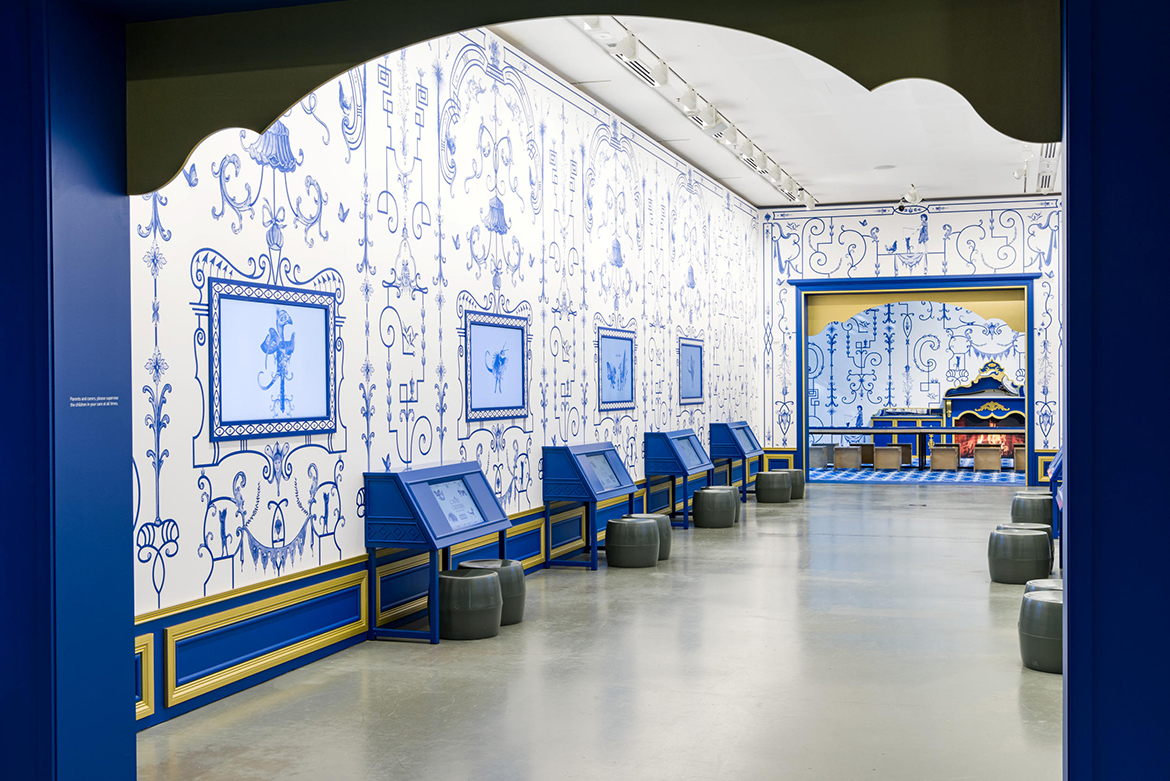
LM / What do you think children will find appealing about the grotesque?
NH / Its freedom! I think the grotesque invites creativity. And I think it’s a nice way for kids to think about figures or bodies. The emphasis isn’t on some ideal or perfect shape, but on any shape. And it has the potential to incorporate diverse parts into a single image. These parts might be meaningful, or they might be silly and fun. It’s my hope they can be both.
LM / The space will be very visually rich. What are some of the hidden details that visitors should look out for?
NH / Visitors will be rewarded for looking carefully. What might at first appear to be a simple curve, for example, may end with the head of a brush turkey! The devil is in the detail. (When I say ‘devil’, I mean revelry, irreverence and delight, rather than something nefarious.)

LM / The space has a striking yet restrained palette of blue and white, based on the interior of a room in Turin’s Castello San Giorgio Canavese, and extends to the materials children are using. In other projects, they might have more freedom with colour. What are your thoughts on this limitation?
NH / My experience of working with children has made me realise that sometimes a blank page and no limitations is paralysing for them. This is especially so with children who, for whatever reason, have decided they aren’t ‘good’ at art. Sometimes a boundary, a limitation, redirects their focus towards what might be possible. I hope the colour limitation makes them think more about the forms they can build, the details they render. It might also give them a sense that, whatever they make, it can be fully integrated into the larger installation. This will be their castle, too.

LM / As part of the project, children can create hybrid creatures, create patterns, and see their image transformed in ‘grotesque’ ways. What do you hope children will take away from their experience of the space?
NH / A friend (who is now a very successful artist) told me recently about his first experiences with the game Dungeons and Dragons. In it, he felt like he was being offered an invitation to take a scene and move it in a direction that was meaningful and enjoyable for him. The scene was set, but he could do anything within it. He didn’t feel like that possibility to imagine was offered elsewhere in life, so it was inspiring. I hope that this project offers something similar. I would like the space to feel like it ‘holds’ the children in its visual consistency and familiarity (to the extent that it reads as a castle, which may be familiar from fairy tales or films). I also want it to encourage their creativity — I want them to be making their marks, their own entries and exits to this fantasy world, in ways that are exciting for them. I want them to feel like they are shaping it, too.
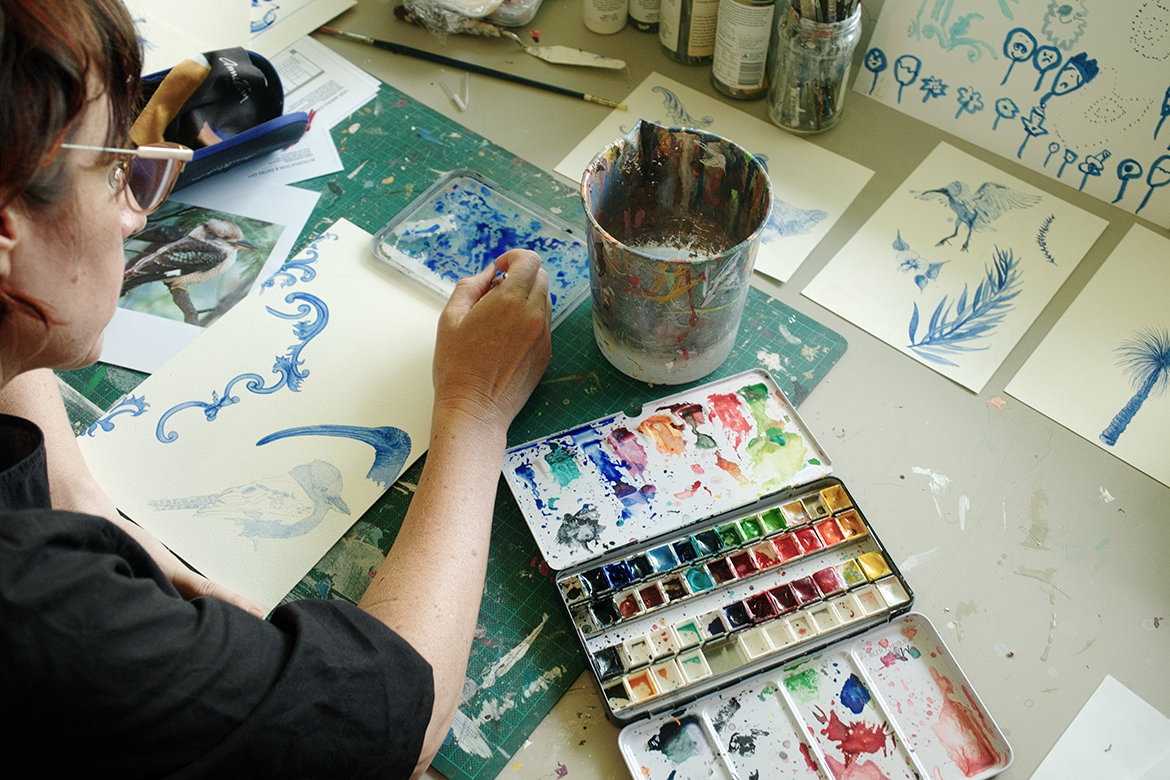
Laura Mudge is Senior Program Officer, Children’s Art Centre. She spoke with Natalya Hughes in May 2023.
‘Natalya Hughes: The Castle of Tarragindi’ is at Children’s Art Centre, GOMA from 9 September 2023 until 14 July 2024
On Tour
To coincide with its display in GOMA’s Children’s Art Centre, ‘The Castle of Tarragindi’ tours regional Queensland January – June 2024. Children and families are invited to engage with hands-on and multimedia interactives exploring decorative and ornamental traditions at art galleries, libraries and schools across the state.
#QAGOMA
